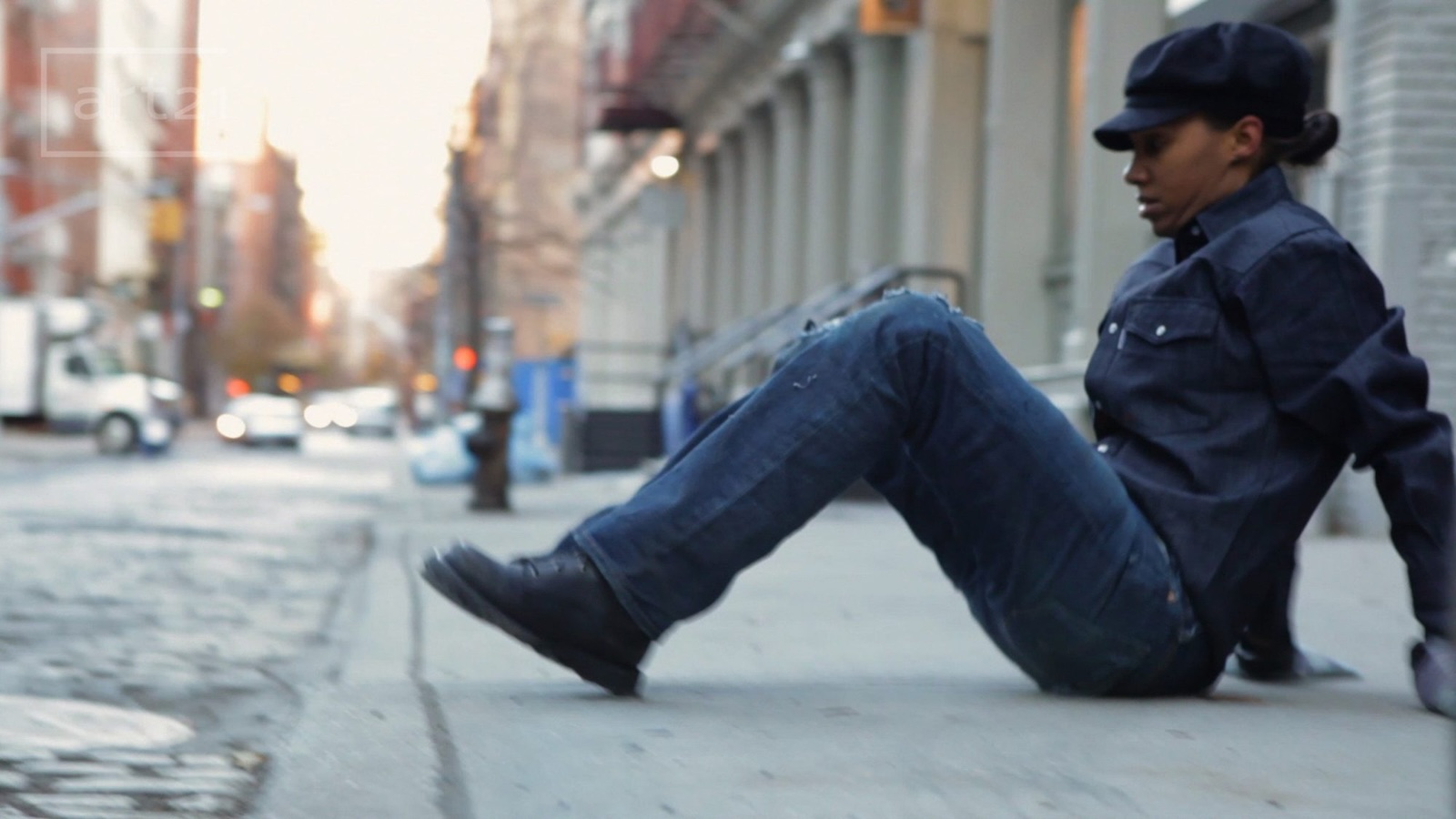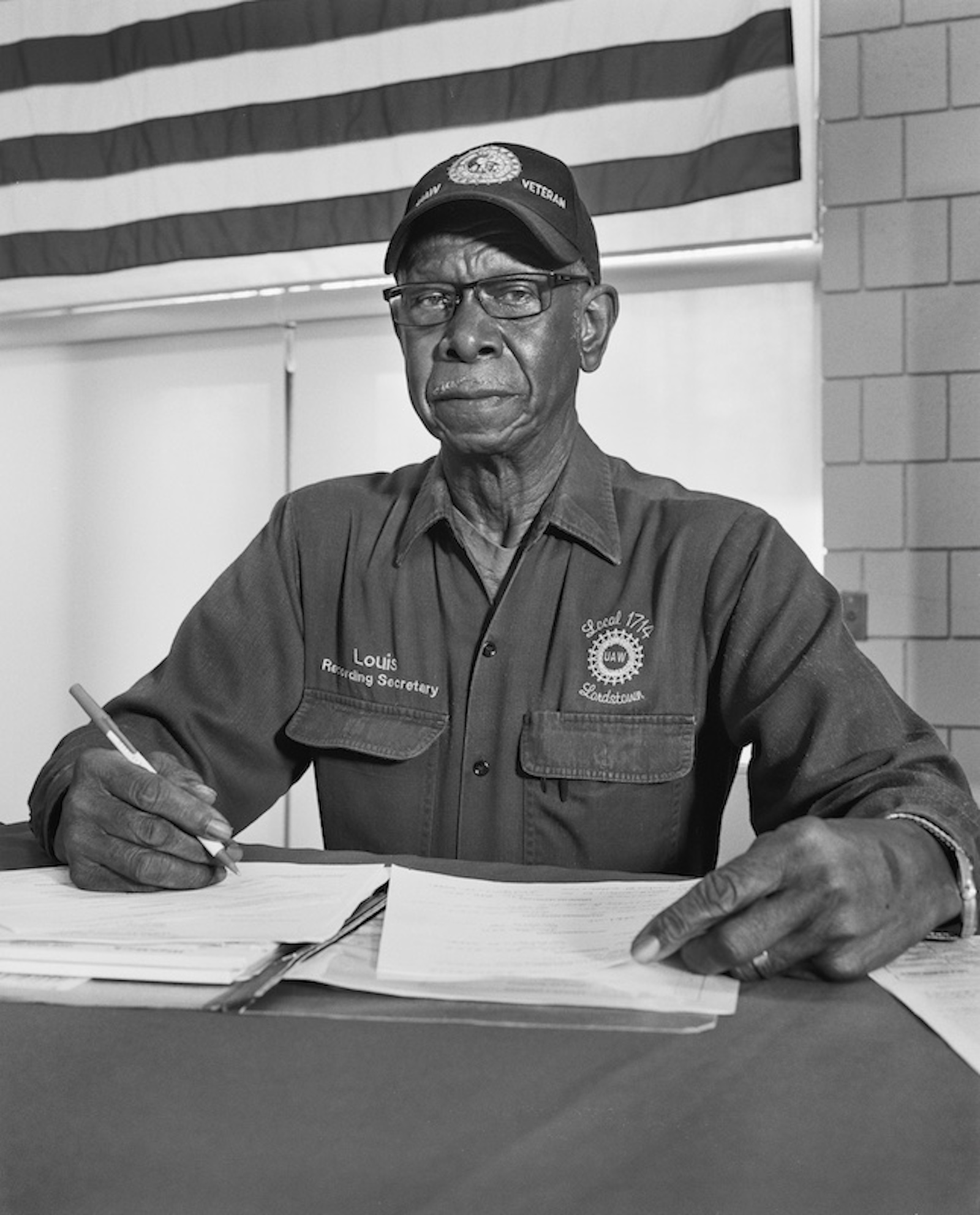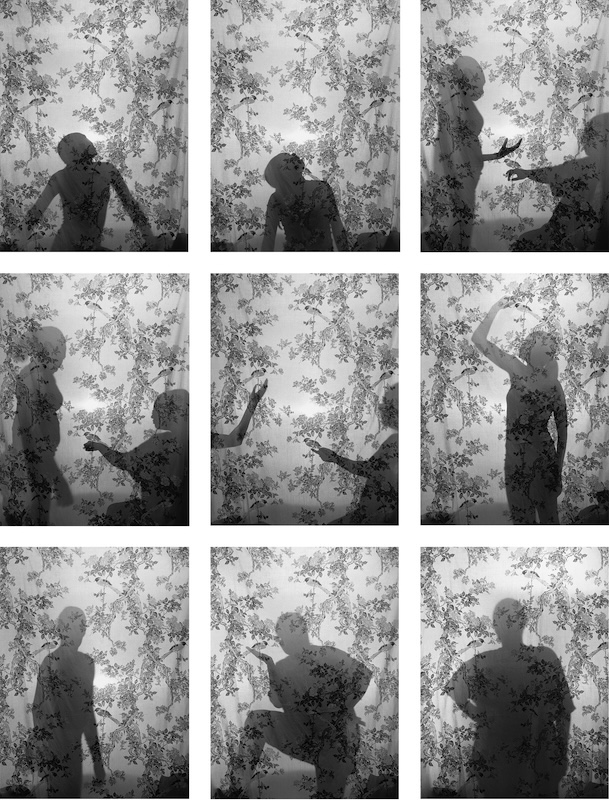The photographer’s fight against environmental injustice and historical erasure, one frame at a time.
In the winter of 2010, the photographer LaToya Ruby Frazier strapped knee pads over her leggings and pulled on a pair of Levi’s blue jeans. The denim brand had just opened a popup shop on Wooster Street in lower Manhattan to promote a new clothing line designed around the motif of the “urban pioneer.” For the site of its ad campaign, the company chose Braddock, Pennsylvania, aestheticizing the town’s post-industrial landscape in a series of images plastered across magazine pages and New York billboards, and making it appear as a place in motion with ample economic horizons for any working American. “Go Forth,” one ad instructed the viewer over a black and white image of a horse flanked by two denim-clad supermodels. It couldn’t be further from the truth.
Wearing combat boots, a cap, and thick industrial gloves, Frazier, who was born and raised in Braddock, crouched on the sidewalk outside the Manhattan store and began dragging her lower body back and forth over the pavement, first her thighs, then her knees. The moves were choreographed, taken from footage of steel industry workers on the job, and meant to create a dissonance between Levi’s glossy campaign ads and the reality of life in a mill town after a long period of decline. Frazier’s repeated motions made a rough, scratching sound, and the jeans she’d worn began to fray. By the end of the hour, they were in tatters, hanging from her legs.
“LaToya Ruby Frazier Takes on Levi’s,” 2010 © 2023 Art21 LaToya Ruby Frazier; courtesy LaToya Ruby Frazier / Gladstone Gallery
The short film documenting the performance, LaToya Ruby Frazier Takes on Levi’s, shot by the visual artist Liz Magic Laser, is currently on display at the Museum of Modern Art in New York, part of the exhibit “Monuments of Solidarity,” which showcases more than two decades of Frazier’s work. Themes of deindustrialization, environmental injustice, and unequal healthcare access are present throughout the photographs on view. From Braddock to Flint, Michigan during the lead drinking water crisis to Lordstown, Ohio in the aftermath of the General Motors layoffs, the artist captures communities facing economic declines, not as a single catastrophic event, but as a process initiated by the country’s power brokers and borne by ordinary working-class people. In many towns, what’s primarily left from the industrial past is the pollution, which continues to accumulate in the soil and the water, making people sick even as the hospitals shutter from disinvestment.
What is the purpose of this documentation? Frazier has said that she feels called “to stand in the gap between the working and creative classes,” to use photo-making as a means of resisting “historical erasure and historical amnesia,” symptoms of an economic and political system that discards communities whose labor it no longer deems valuable. She does this by not only taking pictures of working-class people, but also by treating her subjects as “collaborators” and displaying their testimonies alongside their portraits. Some of Frazier’s portraits may look like so much documentary work you’ve seen, but she’s not interested in photography as an isolated or objective act. No art for art’s sake; she invites communities to see themselves in a different way — as historical subjects, as agents in a broader struggle — a step toward believing that they are not powerless.
Louis Robinson, Jr., UAW Local 1714. LaToya Ruby Frazier; courtesy LaToya Ruby Frazier / Gladstone Gallery
That the awareness of a person’s agency can alter their lived experience is not theoretical. For half a decade, I’ve reported on communities reckoning with legacy pollution and unbridled industrial expansion, and along the way, I’ve found that a deep sense of the past can have a galvanizing effect. To recognize oneself as belonging to a wider context or system is to also imagine a world beyond its daily injustices, one worth fighting for: What if the chemical company built someplace else? What if the district had the resources to offer its children a future?
I saw this firsthand in my home state, Louisiana, where a maze of petrochemical infrastructure clings to the banks of the lower Mississippi River, dumping cancer-causing chemicals into the air and water of predominantly Black towns, some of which were founded by formerly enslaved people more than a century ago. The people of “Cancer Alley” describe the plants as only the most recent installment in a long arc of racial injustice. Plantations once stood on the mammoth tracts of land where companies like Exxon Mobil, Occidental Petroleum, and BASF erected smoke stacks and ethylene crackers. By telling a different story about their communities, and placing themselves at the center of it, local advocates have had some success in challenging proposed industrial projects in court, arguing that building new facilities over the graves of their enslaved ancestors amounts to a violation of their civil rights and the desecration of historic sites.
“Momme Silhouettes” from The Notion of Family, 2010 © 2024 LaToya Ruby Frazier, courtesy of the artist and Gladstone gallery. LaToya Ruby Frazier; courtesy LaToya Ruby Frazier / Gladstone Gallery
Before Frazier could open anyone else’s eyes, she started at home. She was 16 when she first picked up a camera and began photographing herself and her family. In an article timed with the opening of “Monuments of Solidarity,” Frazier describes how she once felt a simple, but no less deeply felt, connection to Braddock as the place where she was born and raised. Witnessing its landscape through her camera’s viewfinder changed that relationship: “My spiritual bondage to Braddock was broken the instant light exposed my film’s silver halide crystals as I created “United States Steel Mon Valley Works Edgar Thomson Plant” (2013), hovering over the city with a bird’s-eye view,” she wrote. “Permeating the 21st century postindustrial landscape were the vestiges of imperial war, patriarchy, and the death and destruction of nature.”
“Monuments of Solidarity” opens with these early works, which are part of her collection “The Notion of Family” (2001-2014). Her primary subjects are herself and the matriarchs that raised her, her mother and grandmother. “I was combating stereotypes of someone like my mother and I,” who are often portrayed as “poor, worthless, or on welfare,” she explained in a 2012 documentary about her work. “We find a way to deal with these types of problems on our own through photographing each other.”




